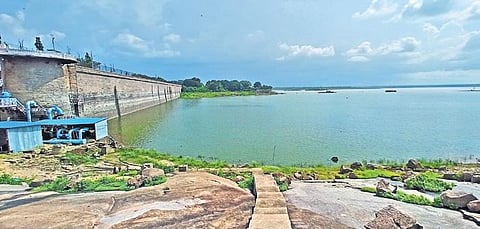

HYDERABAD: Irresponsible, catastrophic, maddening and unacceptable were some of the words used by Hyderabad-based experts to describe the statement by Chief Minister K Chandrasekhar Rao on abolishing GO 111 that sets a 10-km radius buffer zone to protect the twin reservoirs Osmansagar and Himayatsagar.
The experts feared that the scrapping of GO 111 could induce a ripple effect of climate-ecological- monetary catastrophes for the city as any further concretisation of the buffer zone would leave the lakes with much less space.
One of the first impacts would be seen on the water supply to the city and the cost of switching from these reservoirs to more resource-intensive projects like Nagarjunasagar, Yellampally, Singur etc.
“These are gravity reservoirs that supply drinking water without a single rupee being spent on pumping. Water from these reservoirs naturally flows into Asifnagar and Mir Alam filter beds without the need to spend a single paisa to pump the water,” expla-ined Dr BV Subba Rao, climate change expert.
“Currently, the government is spending Rs 2- Rs 5 per KL to get water from these twin reservoirs, while it’s spending Rs 150 per KL to get it from the Godavari. This proves that it is also economically inadvisable to scrap GO 111,” added Donthi Narasimha Reddy, a renowned environmentalist.
GO 111 allows construction of homes in layouts in the 10km radius but does not allow major industries, projects etc to come up as 60 per cent of total area should be open spa-ce. Allowing larger industries, construction works could directly impact groundwater levels across GHMC limits.
“Currently only 70-80 per cent of the water needs of the city is met by groundwater. If the catchment of these reservoirs gets affected, the city will face the brunt. The government is only supplying 5 litres per person as drinking water that too only to 40 per cent of the population and ass-uming that’s enough. It doesn’t realise that a major part of the water needs is met from the groundwater,” said Donthi.
The water shortage, economic cost apart, the damage could also be upon the city’s heat levels over the years.
Impact of climate change
“To understand the role these twin reservoirs play, one can picture Osmansagar, Himayatsagar and Mrigavani Forest which are between these two as windows for the city. It is from this end of the city that we get a steady flow of wind that gets cooled above the lakes and brings in respite for the heat-trapping that occurs in Hyderabad due to the concretisation. If these windows are disrupted with more construction allowed, the city will certainly be headed for a worse climate crisis than now,” said Lubna Sarwath who works extensively on the city’s lakes.
Scrapping GO 111 could also mean no flood prevention mechanisms being present upstream Musi river which could mean havoc for Hyderabad which has seen flooding even during short bursts of rain.
“Not only were these reservoirs built for drinking water supply, but also to ensure that an incident like 1908, which flooded the city, does not recur. Disruptions and concretisation in the catchment would mean that the areas downstream Musi could get easily inundated. These reservoirs have been unique considering the 10 km long buffer set by the Supreme Court which makes it more important to conserve,” said advocate K Shravan Kumar, who takes up cases on the environment.